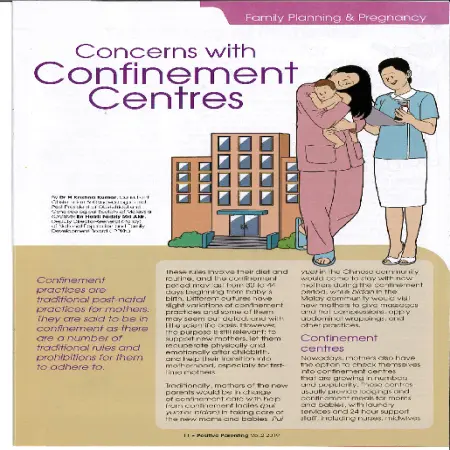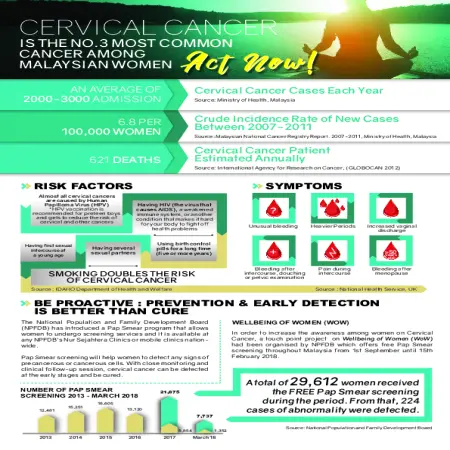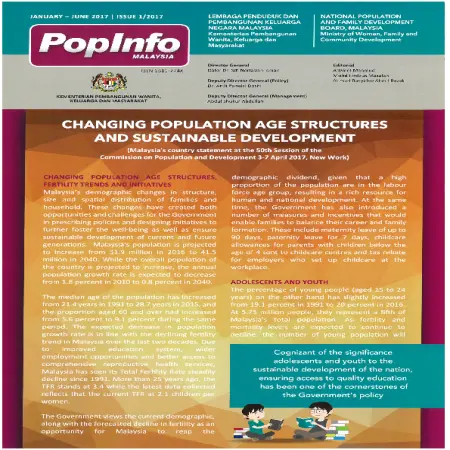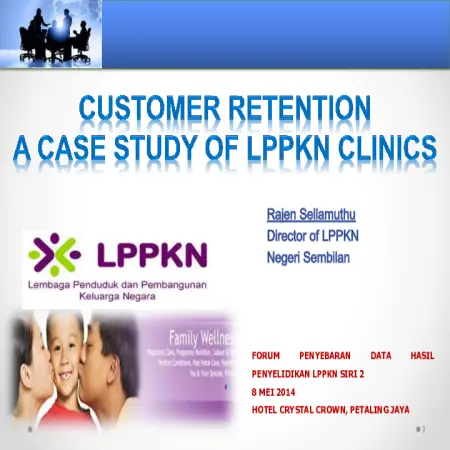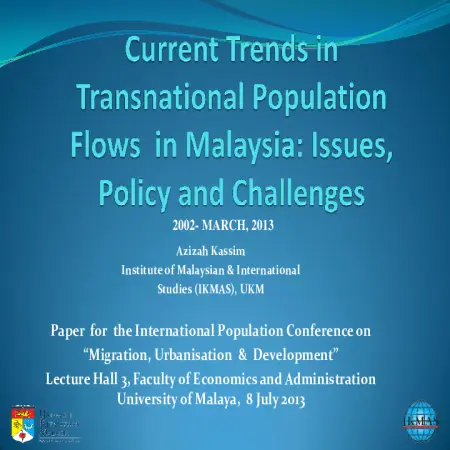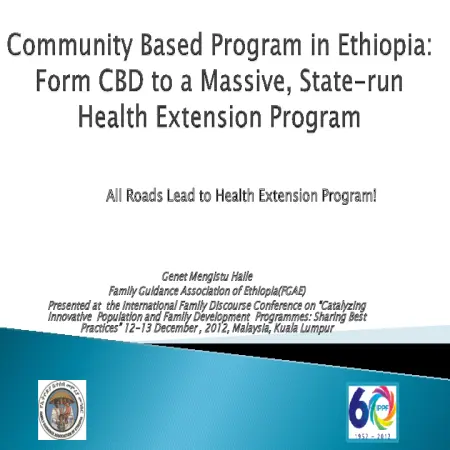TOPICS
|
|
Comparison of rural and urban contraceptive methods preferences among married women in Malaysia, 2018
Item Type: Article
Editor:
Year: 30/05/2021
Abstract: Contraceptive use among women remains an important public health intervention. Imperatively, the equality of family planning access between rural and urban areas allows all women to have the same opportunities to receive family planning services towards better well-being of families. The study aims at comparing the family planning preferences among women aged 15 to 49 throughout Malaysia in 2018 according to the geographical locations of rural ad urban areas. This is important for resources planning and allocation to the National Population and Family Development Board (NPFDB) clinic based on the locations. The data were collected from 49 NPFDB clinics throughout Malaysia. A total of 3668 married women aged 15 to 49 years used the family planning services in the NPFDB clinic in 2018. In this study, descriptive,. Chi-Square, and logistic regression analyses were carried out to compare the patterns and preferences of contraceptive use. The results analysis shows that the implant is the most popular method among all other contraceptive methods provided by the NPFDB clinics. Specifically, in both rural and urban areas, the three most popular contraceptive methods among married women in Malaysia in 2018 are implant, pill, and condom. Findings of the analysis based on the Chi-Square test show that age group, educations levels, and different types of contraception method were identified to have a significant association with the locations of either rural or urban areas. In conclusions, this study found that women who used implants as a method of contraceptives were often younger, better educated, and lived in an urban area. Therefore, the family planning providers especially NPFDB clinics play a key role in providing information, educating couples, and promoting the use of different family planning methods so that better family well-being could be achieved.
|
|
|
|
|
|
Contraceptive use: patterns and preferences among new acceptors in Malaysia, 1990 to 2018.
Item Type: Article
Editor:
Year: 05/04/2021
Abstract: Family planning is one of the important aspects in the Sustainable Development Goals (SDG’s) in Goal 3 on Health and Goal 5 on Gender Equality and Women’s Empowerment. Family planning is the basic need and women’s right to pregnancy, to get optimal health. The use of contraceptive enables women to attain their desired number of children and determine the gap of pregnancies towards the improvement of the families’ well-being of. The aim of this paper is to describe the patterns and preferences of contraceptive use among new acceptors attending a family planning clinic at National Population and Family Development Board (NPFDB) is sixteen states in Malaysia. The data analysis includes the new acceptors of contraception use among married women aged 15 to 49 years old, who attended a family planning clinic at NPFDB for the year 1990 to 2018. There are various types of contraceptive methods considered: contraceptive pills, Intrauterine Contraceptive Device (IUD), condom, hormone injection, implant, sterilization, rhythm and others. Results of the new acceptors at NPFDB clinic, with decreasing pattern from 1990 to 2018. While the use of implant, hormone injection and condom has increased steadily since 2004. The state of Perak has the highest number of new acceptors in most year, while the federal territory of Labuan has the lowest number of acceptors in most years within 29 years from 1990 to 2018. As a conclusion, this study has found that although the use of contraceptive pill is decreasing, it still becomes the most popular among a new acceptors in most of the states in Malaysia since 1990. However, the decreasing pattern of new acceptors for all types of contraceptive methods becomes our concern. Future research should therefore, concentrate on the investigation of the reduction number of new acceptors at NPFDB clinic. This is important to make sure the demands of contraceptive can be met and NPFDB clinics could provide better services towards better quality of life and better families’ well-being.
|
|
|
|
|
|
Cervical cancer
Item Type: Infographic
Editor:
Year: 00/05/2018
Abstract: This infographic describes information about cervical cancer. Cervical cancer is the no.3 most common cancer among Malaysian women. Almost all cervical cancers are caused by Human Papilloma Virus (HPV). The symptoms such as unusual bleeding, heavier periods and bleeding after menopause.
|
|
|
|
|
|
Changing population age structures and sustainable development
Item Type: Newsletter
Editor:
Year: 00/00/2017
Abstract: Malaysia's demographic changes in structure, size and spatial distribution of families and household. These changes have created both opportunities and challenges for the Government in prescribing policies and designing initiatives to further foster the well-being as well as ensure sustainable development of current and future generations. Malaysia's population is projected to increase from 31.9 million in 2016 to 41.5 million in 2040. While the overall population of the country is projected to increase, the annual population growth rate is expected to decrease from 1.8 percent in 2010 to 0.8 percent in 2040.
|
|
|
|
|
|
Corporate initiatives in empowering societies
Item Type: Conference or Workshop Item
Editor:
Year: 00/00/2016
Abstract: Digi’s ambition is to enable the Internet in the hands of every Malaysian for youth, children, women, the underserved, netizens and more. We passionately believe that all Malaysians should be given the opportunity to benefit from the power of the internet. Empower Societies is our commitment to enable the internet for all communities to inspire a better Malaysia and this promise to make meaningful impact in the lives of Malaysians is enabled through our corporate programmes; helping more segments of the society benefit from being connected.
|
|
|
|
|
|
Customer retention: a case study of LPPKN clinical services
Item Type: Conference or Workshop Item
Editor:
Year: 00/00/2014
Abstract: This is a descriptive study intended to identify the main factors which contribute to the customer retention among the “Clinical Clients” of National Population and Family Development Board or LPPKN. The study focused on three variables to check on the level of influence, affect and effect to the process of customer retention. Those variables are service branding, perceived value and service quality. The study also covered the impact and influence of the demographic element to the service branding, perceived value and service quality in the process of customer retention. This study was conducted at the LPPKN Clinics in Klang Valley and Seremban. Understanding and fulfilling the customers need will contribute to retaining existing customers and reduce the customer switching intentions. The research findings show there is a positive relationship between perceived value and service quality with customer retention. Nevertheless relationship between service branding and customer retention is not supported for the LPPKN clinical setting. Analysis on the demographic factor showed that, it has a significant influence in regard to service branding, perceived value, services quality and customer retention. The output of the study will be helpful to managers and marketers of the clinical service to understand the customer needs, priority and expectations. Furthermore the findings of the research will enable the managers and policy makers to take necessary actions in their marketing and operational planning to stay competitive and maintain a stable income for a long term. This study will also help LPPKN Clinics to improve service quality, increase number of clinical clients, facilitate the process of customer retention and in long term improve financial performance.
|
|
|
|
|
|
Current trends in transnational population flows in Malaysia: Issues, policy and challenges
Item Type: Conference or Workshop Item
Editor:
Year: 00/00/2013
Abstract: In the last 40 years there has seen a substantial increase in Malaysia’s foreign pop. According to the last National Census in 2010, out of a pop of 28.4 million, over 8.3% are non-citizens. The increase is mainly the result of labour inflow since the early 1970s due to Malaysia’s relatively better economic development and political stability which attract economic migrants and asylum seekers from within and outside the ASEAN region. This paper which focuses on current transnational flows in the country has the following objectives: 1. To provide an overview of transnational population flows in Malaysia in the last decade and identify major streams that are causing considerable concern to the state and the Malaysian public. The focus is on the low skill foreign workers, the largest category of migrants in Malaysia. 2. To examine public perceptions of foreign workers, how such perceptions are formed and what their impacts are on state policy. 3. To discuss the state policy on foreign workers, both legal and irregular, the objective of the policy and its strategies. 4. To highlight the challenges faced by the state in implementing the foreign worker policy. 5. To evaluate the achievement and shortcomings of the policy. The writer identifies five types of transnational inflows into Malaysia i.e. that of low skill migrant workers both legal and irregular; asylum seekers; expatriates; foreign students; and participants of Malaysia’s My Second Home (MM2H) project.
|
|
|
|
|
|
Community based program in Ethiopia: from CBD to massive, state-run health extension program
Item Type: Conference or Workshop Item
Editor:
Year: 00/00/2012
Abstract: The Family Guidance Association of Ethiopia (FGAE) pioneered a Community-based FP Distribution [CBD] program in Ethiopia in 1991. The CBD agents were selected by the community members through prior set selection criteria including interest and willingness to volunteer for community work and sufficient knowledge about the socio-economic and cultural context of the community. The CBD program was very widely replicated by many other institutions as a low cost, effective strategy to increase access to modern contraceptive services in under-served communities. Considering the challenges related to distance and access to fixed health facilities among women with high unmet needs and the lessons drawn from project based success stories of the CBD programs, the government of Ethiopia initiated the Health Extension Program (HEP) in 2003 to accelerate utilization of primary health care services in rural communities. The HEP is implemented by trained health extension workers or practitioners at the community level with strong focus on health promotion and disease prevention and empowering community members to make decisions and take actions on their own health. The Health Extension Workers (HEW) were recruited from the community among those who completed high school and trained for one year. Currently, two female HEWs are assigned at each kebele (the lowest administrative unit) and to implement a package of 16 primary health care services including FP and maternal health. A total of about 35,000 rural HEWs and 4,800 urban Health Extension Professionals [Graduate Nurses] are deployed by MoH as government employees throughout the country. The program has created a better opportunity, particularly for rural women and young people to access health services including FP/RH.
|
|
|
|
|
|
Civil society and family well being: sharing of experience
Item Type: Conference or Workshop Item
Editor:
Year: 00/00/2012
Abstract: Focus on the Family Malaysia is a non-profit organization set up with a clear vision to strengthen families. The vision of focus on the Famliy Malaysia is to enriched families and communities nationwide. Meanwhile, to assist families to gain practical skills and support at the same time to equip and strengthen their relationship through the program like bonding program. For example, Father & Son Adventure Camps, Mother & Son Connections, Father & Daughter Banquet and Mother & Daughter connection. This program is design to help enhance relationships and foster a greater understanding between parent and child. Besides, No Apologies program, is a character-based abstinence program for youths aged 13-24 years as well as providing support for individuals and families through counseling.
|
|
|
|







